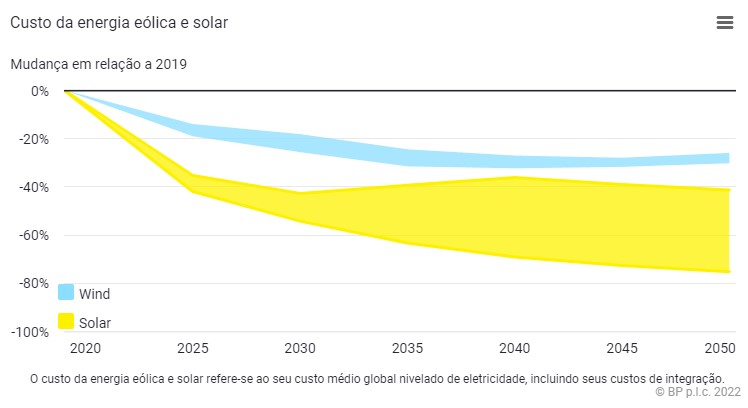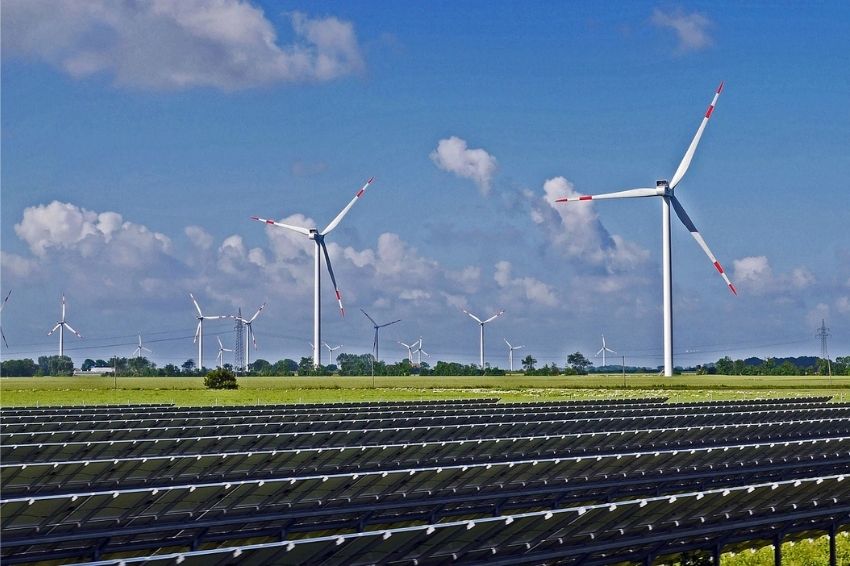O LCOE (levelized cost of electricity) of solar energy, including integration costs, is expected to fall by about 40% to 55% by 2030 worldwide, according to the Energy company British Petrol's Energy Outlook 2022.
The study also points out that the LCOE of wind energy will fall between 20% and 25% in the same period.
In the short term, the report estimates a reduction in solar LCOE from 20% to 30% by 2023 (see graph below). While for wind energy the cost will fall by around 5%.
Research indicates that combined wind and solar installed capacity by 2050 will increase more than 15 times over 2019 levels under Accelerated and Net Zero and nine times under New Momentum.
According to the report, this projected rapid expansion of solar energy will be driven by continued drops in costs and will be supported by increased efficiency of photovoltaic modules and larger project scales.

Also according to the study, the pace of cost reductions will slow and eventually stabilize over the last two decades of the outlook, as falling generation costs are offset by the increasing expense of balancing power systems with increasing shares of sources. variable energy levels.
The report also shows that this rapid acceleration in the installation of wind and solar capacity depends on a series of factors, such as transmission and distribution capacity, availability of raw materials and planning.
Furthermore, the pace of increase in wind and solar capacity is expected to slow over the last 10 years of the outlook, as the power sector moves closer to full decarbonization and the cost of including increasing shares of wind and solar grows.
The research also shows that emerging economies will account for more than three-quarters of the increase in wind and solar capacity deployment in Accelerated and Net Zero by 2050, with China contributing about a quarter of the increase.
Energy Outlook 2022 is focused on three main scenarios: Accelerated, Net Zero and New Momentum. The scenarios explore the possible implications of different judgments and assumptions regarding the nature of the energy transition. Furthermore, they are based on existing and developing technologies.

















